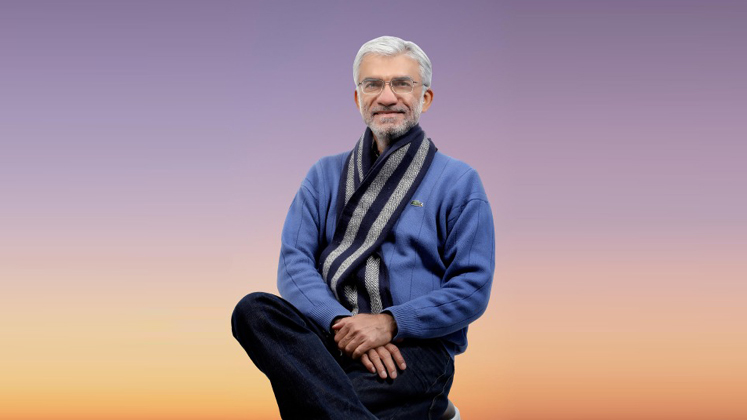For a digital fashion world and digital wearable industry, the term ‘metaverse’ is not new anymore. A fashion metaverse, in reality, is a virtual world where fashion enthusiasts can interact with their digital counterparts, hold meetings, buy property, wear designer clothes and do much more.
Right from luxury brands (Burberry, Balenciaga, Gucci, Louis Vuitton) to premium brands (Ralph Lauren, Tommy Hilfiger, Nike) and even fast fashion brands (H&M, Zara), the fashion retail fraternity is affiliating strongly with the metaverse to mark strong presence in the virtual world. And rightly so as the global metaverse market size valued at US $ 100.27 billion in 2022 which is projected to grow to a whopping US $ 1.53 trillion by 2029, exhibiting an impressive CAGR of 47.60 per cent. Who doesn’t want to be a part of this massively mushrooming concept!
What’s noteworthy is the acceptance of tech-savvy young consumers for digital fashion and metaverse concept as this generation spends insane amount of time in the virtual world and these consumers start to believe physical clothing is not going to help them, so they intend investing in digital fashion wearables.
This changing buying behaviour is helping the fashion industry push its own boundaries to expand its horizon and put an end to fast fashion desires of consumers without causing any harm to the environment. Therefore, a metaverse also aligns to the fashion industry’s endeavours towards achieving more sustainability across their offerings – another top-notch benefit for fashion brands.
Hype about fashion metaverse is real!
So, what is it that’s creating so much hype about fashion metaverse that was not even a known word before Covid-19 hit the world? Since pandemic disrupted traditional markets, fashion brands and retailers were looking at alternate concepts and eventually virtuality evolved out of the pandemic that was a result of ethical buying concepts, the understanding of which has been strongly developing in next-gen consumers for some years now.
Sunil Arora, Co-Founder, Trace Network Labs, while talking to Team FashTech Journal, cited an example – Imagine you are wearing a T-shirt in a metaverse, made out of a fabric that can’t be produced in real world, which has flames all around your shoulders, fluorescent lights on your sleeves and a real-time message popping on your chest! Wouldn’t you want your digital avatar to be an expressive one so as to make you stand out in the crowd? That’s what fashion enthusiasts are aggressively developing today to provide a platform to global fashion consumers and brands to help them move on to fashion ‘metaverse’ and experience a whole new digital life over there which is real alike, interactive and innovative.

This is exactly how metaverse in fashion is shaping up. The fashion brands, retailers and metaverse creators are looking at this virtual space to: (1) Enrich the consumer experience; (2) Introduce virtual products, only available in the metaverse; (3) Collect new data on customers; (4) Market physical and digital products and services; (5) Support metaverse payments and finance; and (6) Offer hardware and applications that support metaverse activities.
Virtual stores were something that fashion brands started to explore in the beginning of 2022; however, the concept picked pace only in the second half of the year and these stores were fully adopted and implemented by a range of established retailers. Lacoste was amongst those, introducing an immersive shopping experience where visitors could purchase digital products and take part in interactive settings around the store.
Additionally, for its 150th year anniversary, department store Bloomingdale’s also debuted a digital store with multiple floors that were dedicated to various partner brands, including Chanel and Ralph Lauren.
During November 2022, adidas Originals unveiled a limited collection of blockchain-based virtual wearables, released as NFT on adidas’ metaverse. Representing the brand’s first NFT collection of wearables, which adidas calls ‘Virtual Gear’, the launch is said to accelerate adidas Originals’ drive towards strengthening its community-based, member-first, open metaverse strategy.
Though metaverse is a buzzword today, it isn’t something that has been coined off late. Almost 30 years ago, ‘metaverse’ term was used by author Neal Stephenson in 1992 in his science fiction novel Snow Crash, where humans, as avatars, interact with each other and software agents, in a three-dimensional virtual space that uses the metaphor of the real world. Stephenson used the term to describe a virtual reality-based successor to the internet.
Metaverse is opening up completely new revenue channels for the fashion brands
According to Technavio’s most recent outlook, the metaverse fashion market is expected to accelerate at a CAGR of 36.47 per cent, reaching US $ 6.61 billion in value by 2026.
All the recent developments in the digital fashion world point out towards one thing – the fashion brands/designers, through NFTs, are able to display clothes in metaverse for digital avatars – online stores, gaming and even virtual world – that can be brought by consumers within the metaverse or by trade with other users/avatars using a decentralised virtual marketplace, ensuring a thoroughly authentic ownership of digital wearable that can’t be duplicated and can be traced at any given point of time on blockchain.
According to Statista, over 3.03 billion people reportedly said they played video games in 2022 and the average gamer spent more than eight hours a week on games! This is where the opportunity lies for the fashion retailers for symbiotic growth. Apart from gaming industry, the social media platforms such as Instagram and Facebook and apps such as Zepeto are also becoming a driving force for brands to earn more revenues in digital spaces.
As avatars within these new spaces – gaming, social media – need clothing to wear, they are providing brands with a fresh revenue stream and helping them make more money by selling their virtual items and clothing in decentralised market.
For example, Roblox – a virtual gaming platform – reports that 25 million virtual items were created on its platform in 2021 alone. Almost 5.80 billion units of those were bought (both paid and free), earning creators US $ 538 million. Fashion brands such as Gucci, Ralph Lauren, Givenchy, Tommy Hilfiger and Nike among many others have already partnered with Roblox.
The concept of digital fashion is certainly derived from video game industry but the fashion industry has hopped on it brilliantly. To have an influence in games, users buy skins that provide a way for players to feel unique. This skin purchasing concept has also evolved. Previously, the video game developers used to sell their skins but now fashion brands look at it from revenue point of view.
“They started creating skins and selling in the virtual world as soon as they realised its worth. More interactive games, immersive internet and innovative digital products collectively gave birth to ‘metaverse’ which, in digital world, is replicating the physical world and the fashion enthusiasts are loving it,” commented Sunil.
India is catching the metaverse wave albeit at slower pace!
The metaverse talks started in India, at a commercial level, in October 2021, when Manish Malhotra – a renowned Indian fashion designer – entered the NFT fashion universe when he joined hands with WazirX NFT Marketplace and FDCI x Lakme Fashion Week and created five exclusive fashion NFTs. This foray of Manish into Non-Fungible Tokens and metaverse made him the first Indian designer to achieve the feat.
Soon after that, Indian premium fashion label Papa Don’t Preach joined the bandwagon and became the first fashion label of the country to showcase digital fashion in metaverse during the Metaverse fashion show that was organised by the Women’s Economic Forum. The label’s Instagram handle shared an exciting glimpse of NNL2.0 sticking to its signature maximalist aesthetic that emulates an authentic Indian design conscience. The consumers could use all these virtual designs on their digital avatars.
“It was totally a Papa Don’t Preach world with six of our pieces that walked the digital runway,” commented Shubhika, Founder of Papa Don’t Preach, adding, “This is our first step into and towards the metaverse, and the possibilities are endless. We showcased our Indian couture to highlight the beauty and intricacies of Indian craftsmanship and tie it to technology and its ever-changing facets.”
Most recently, the e-commerce giant of India Flipkart too has forayed into metaverse with its own web 3.0-enabled platform recently – Flipverse. For the initial launch of Flipverse, Flipkart has partnered with over 15 brands (including fashion brands such as PUMA too) to produce about 100 virtual products.
Other renowned fashion designers such as Raghavendra Rathore, Anamika Khanna and Pankaj & Nidhi are also foraying (or have forayed) into the Metaverse universe and are trying to make bigger impact through their digital product lines, offering a complete metaverse-like experience.
However, all these developments can be termed as ‘niche’ and, in a country that caters to over 1.35 billion population, these developments are just negligible!
“The biggest challenge in India is that we are a very touch-and-feel society and hence overcoming the touchless approach will be a psychological shift that will take its own course and time,” commented Raghavendra Rathore.
Metaverse experiences are split into mainly two categories – first is the centralised shopping experience on metaverse while the second category is the brand that wants to leverage its existing physical products and convert them into digital assets like for Nike, Nikeland on Roblox was a success.
The fact is many Indian brands are contemplating getting into the metaverse but are still not able to identify the return on investment when they create an experience on the metaverse. It is still in infancy stage for Indian brands, as stated by Rrahul Sethi, Founder, Metaverse911.

“One of the key areas where Indian brands have done extremely well on metaverse is attracting younger generation from web 2 (social media) and creating small immersive experiences for them to start engaging with them. Indian Brands have used AR (Augmented Reality) well but now they have to achieve similar standards in metaverse with their digital avatars. This transition will take a little more time,” mentioned Rrahul, adding, “Technologies such as Try-Ons have existed for long time. Now, the time has come to try phygital assets on metaverse avatars. That will be a game-changer.”
It should also be noted here that metaverse and cryptocurrency are not mutually related at all. One can transact easily on metaverse by credit card and hence, people should be aware about this difference.
Gagan Pal Singh Nagi, Founder & CEO, Metalty Ventures is building India’s first mall in metaverse named MetaBharat and feels building a community is a process and will have its own journey for each brand. However, early adapters will have great advantage over others.

“There are few important factors that play a vital role in taking a decision – price, subject understanding, available use cases, crypto integration. There are some projects which are working towards promoting early adoption by addressing these points and MetaBharat is one such project which simplifies the process by introducing store leasing for short duration with design template. With MetaBharat, brands can enter metaverse and start their journey in 30 days,” averred Gagan.
Unpopular Opinion
Rise of Metaverse fashion sparks debate if digital avatar needs to be more ‘humanised’ for a better social environment
Have you ever tried forming a digital avatar of yours for gaming or fashion purpose? Those who have answered in ‘yes’ know the fact quite well that digital avatars are emotionless, perfectly sized and colourised as per available standards. But the pressing question here is – do digital avatars need to be made like they are made presently? Since metaverse fashion is gaining strong grounds and consumers of today’s era demand more personalised digital avatars of theirs, shouldn’t avatars be made more human, offering ages, weights, imperfections, acne, braces, scars etc.?
Why these questions are necessary to be answered by fashion experts is because various studies show how body dysmorphia occurs in the online virtual spaces often that leads to various damages to the mental health of a consumer. Speaking in a Clubhouse session ‘Future of Phygital’ – hosted by Lauren Kacher, Founder and Creative Director, ALTERRAGE (a phygital fashion label) – Katherine Schildmeyer, CEO and Founder, KS Apparel Design (USA) opined, “We have an ideal of beauty we want to portray, but with regard to the advertising history, this has been done for centuries, and most of the time we see negative responses to the human relationship with body and beauty.”

Video game industry is changing the mental state of fashion consumers and that impacts buying patterns.
What Katherine pointed out here does have a deep-rooted link of fashion consumers with their changing mental states. Gaming industry is huge and a person spends usually 10-12 hours playing video games in a week and men are often influenced by idealism body avatar marketing in video games.
Men who are more engaged in the virtual world can become unattached and unattracted to the human version of women due to overly sexualised ideal avatars. In a study named The Impact of Body Emphasising Video Games on Body Image Concerns in Men and Women published by Christopher P. Barlett and Richard J. Harris, they have mentioned this point by emphasising on the fact that the addiction to online images versus reality also creates a very hard standard for women to live up to that.
Overall, the results from this study suggest that when male participants played a video game that emphasised muscular male bodies, they had an increase in their negative body image. Specifically, these results showed that those who played the video game, independent of condition, had a decrease in positive feelings towards their body, had a decrease in their general body esteem, had a decrease in their positive attitudes toward muscularity and had a decrease in the drive for muscularity.
So how does it relate to the clothing industry? Consumers are the ones whose buying preferences matter for the fashion brands. As the gaming industry is changing the way how they look at things both in the digital space and in reality, it is also changing the way how they shop clothing products.
“Consider the emotions of a girl who thinks she is fat and out of shape because she doesn’t look like the ‘ideal’ female, especially with regard to materials her husband gets stuck looking at in video games. Due to advertising and messaging, she doesn’t see her form as something that is perfectly fine. I did some research and have been posing questions to all men and women of different sizes and trying to figure out how they visually see bodies basically with avatars. What I found was that there is a lot of disconnect in human form after a certain age and certain size when a person spends a lot of time in digital space,” commented Katherine, adding, “They actually begin to have almost bi-polar association with themselves. And this happens with men who get impacted more with body dysmorphic disorder issue and idealism within their digital avatar than women.”
A lot of consumers fall prey to the idea that the fashion brand will change the sizes of clothing after a certain period of time, without even realising that their own body/bone structure has changed. With age, their posture changes, their hips tilt when they sit, and their mental health takes a sharp plunge when they spend a lot of time in virtual space before coming back to real world. In that process, they feel the brand must have had certain changes in their sizing standards as time passes by! But, no. It’s the body that is changing and consumers need to realign with the brand rather than changing their buying patterns.
That’s where the idea of more ‘humanised’ digital avatar generates…
Through new-age digital world, one can actually develop the real human form in the virtual way. Creating a future that is more mentally healthy is possible and can be achieved by offering two genres of avatars – Super-creative fantasy avatars, offering alien (not human) options that allow pure fantasy to be created without confusing the subconscious; and Humanity-driven avatars that offer ages, weights, imperfections, acne, braces, scars and etc.
Another issue is that the majority of such consumers don’t understand that one size doesn’t fit all when they go out to buy apparel. The way mathematics works in pattern drafting doesn’t allow standardisation or perfection of a size that fits all. Two persons can have the same height of 5’8” but there are 99-100 per cent chances that they will have different weights and shape of body, unlike digital avatars that they see in games.
“Imperfections are what make us human. Helping users connect back to what makes them an individual is important and having an option to also see how something works between ages and sizes will further upskill designers in human-centric design methods. For men, it is important to cover their posturing and shoulder slope as they gain weight with age. Another solution can be that brands start offering garments using shape-driven process rather than size-driven process where consumers have to buy according to their shapes,” shared Katherine, suggesting that with more humanised digital avatar, people will be able to accept the fact that they are all different and will be encouraged to accept those differences.
The same is advocated by Jo Redfern, Global Head of Brand, 24 Watts (a UK-based firm supercharging smart brands to ignite kids’ imagination) who says, according to Wunderman Thompson, 65 per cent of Gen Z media consumers prefer an avatar to a ‘real’ identity. Two-third of them would rather use a fictional persona as their online representation.
